
Google AdWords vs. Yahoo Bing Network – A PPC Performance Comparison

Every search marketer knows Google dominates in U.S. search
volume, handling two-thirds of all search queries. And yet, less is
known about the entity that reportedly accounts for roughly the other third of searches – the Yahoo Bing Network (YBN).
This brings up a number of interesting questions for paid search marketers. For example:

However, in the sixth category, Financial Services, YBN actually displayed more ad impressions than AdWords (although AdWords still yielded more total click-throughs within the vertical).
In addition to earning more search traffic, advertisers on AdWords generally experienced higher CTRs – with AdWords campaigns found to be 2.4 to 5.9 times higher than those on YBN during the period, depending on the vertical.
However, among the advertisers who were active on both engines, AdGooroo found some who actually had better CTRs on YBN than AdWords. For example, 9.5 percent of the Financial Services advertisers who sponsored paid search on both engines enjoyed higher CTRs on YBN than on AdWords, including Citicards and Fidelity Life. In the Shopping & Classified category, 5.7 percent of the overlapping advertisers had higher CTRs on YBN, including JCPenney, QVC, Old Navy, Kmartm and Shutterfly.
The study also showed that there is significantly less competition on YBN than on AdWords. Across the six verticals studied, AdGooroo found 25,056 paid search advertisers on YBN receiving at least one first SERP ad impression, compared to 39,006 advertisers active on AdWords during the quarter. In other words, there were 36 percent fewer active search marketers on YBN to bid against.
Even so, that notion doesn't appear to be widespread in the industry. Of the 41,548 advertisers who had paid search ads appear on either engine during Q3 2012, 42 percent (or 17,458) didn't record any ad exposures on YBN's first SERPs during the period. By comparison, only 6 percent (or 2,542) did not have first SERP ad exposures on AdWords.
The report's findings notwithstanding, over the last four years both search networks seem to be more or less fixed in place in terms of their share of domestic search volume. Time will tell whether that will change, and whether we'll see changes in the media buying habits of PPC marketers as well.
This brings up a number of interesting questions for paid search marketers. For example:
- Is Google dominant in every vertical?
- How do the two engines compare on click-through rate (CTR) and cost per click (CPC)?
- Are paid search auctions as competitive on YBN as on AdWords?
- Shopping & Classified (composed of a broad range of retailers)
- Financial Services
- Travel
- Education
- Computer & Internet
- Business to Business (B2B)

AdWords Leads in Paid Search Spend, Clicks in All Verticals
AdWords delivered significantly higher impressions in five of the six categories studied – especially in the Shopping & Classified retail category, where it displayed 1.6 times as many first SERP ad impressions as YBN (an incremental 7.3 ad million impressions) during the quarter.However, in the sixth category, Financial Services, YBN actually displayed more ad impressions than AdWords (although AdWords still yielded more total click-throughs within the vertical).
In addition to earning more search traffic, advertisers on AdWords generally experienced higher CTRs – with AdWords campaigns found to be 2.4 to 5.9 times higher than those on YBN during the period, depending on the vertical.
However, among the advertisers who were active on both engines, AdGooroo found some who actually had better CTRs on YBN than AdWords. For example, 9.5 percent of the Financial Services advertisers who sponsored paid search on both engines enjoyed higher CTRs on YBN than on AdWords, including Citicards and Fidelity Life. In the Shopping & Classified category, 5.7 percent of the overlapping advertisers had higher CTRs on YBN, including JCPenney, QVC, Old Navy, Kmartm and Shutterfly.
The Yahoo Bing Network Offers Certain Advantages
CPCs were almost invariably lower – and usually significantly lower – on YBN than AdWords – from 37 to 77 percent of AdWords' CPCs, again varying by vertical. So, advertisers were paying a high premium to gain access to AdWords' heartier search traffic and CTRs. And, as a result of lower CPCs, Brand Impressions (first SERP CPMs) varied from 76 to 90 percent cheaper, on average, on YBN than on AdWords.The study also showed that there is significantly less competition on YBN than on AdWords. Across the six verticals studied, AdGooroo found 25,056 paid search advertisers on YBN receiving at least one first SERP ad impression, compared to 39,006 advertisers active on AdWords during the quarter. In other words, there were 36 percent fewer active search marketers on YBN to bid against.
What Does This Mean for PPC Marketers?
AdWords is the logical first choice for paid search advertisers for two reasons: superior impressions and click-through rates. However, YBN's advantages – lower CPCs and CPMs and less competition for ad position – offer a ripe, incremental opportunity for advertisers seeking to maximize their search efforts.Even so, that notion doesn't appear to be widespread in the industry. Of the 41,548 advertisers who had paid search ads appear on either engine during Q3 2012, 42 percent (or 17,458) didn't record any ad exposures on YBN's first SERPs during the period. By comparison, only 6 percent (or 2,542) did not have first SERP ad exposures on AdWords.
The report's findings notwithstanding, over the last four years both search networks seem to be more or less fixed in place in terms of their share of domestic search volume. Time will tell whether that will change, and whether we'll see changes in the media buying habits of PPC marketers as well.
The Original Search Marketing Event is Back!
 SES Denver
(Oct 16) offers an intense day of learning all the critical aspects of
search engine optimization (SEO) and paid search advertising (PPC). The
mission of SES remains the same as it did from the start - to help you
master being found on search engines. Early Bird rates available through
Sept 12. Register today!
SES Denver
(Oct 16) offers an intense day of learning all the critical aspects of
search engine optimization (SEO) and paid search advertising (PPC). The
mission of SES remains the same as it did from the start - to help you
master being found on search engines. Early Bird rates available through
Sept 12. Register today!
 SES Denver
(Oct 16) offers an intense day of learning all the critical aspects of
search engine optimization (SEO) and paid search advertising (PPC). The
mission of SES remains the same as it did from the start - to help you
master being found on search engines. Early Bird rates available through
Sept 12. Register today!
SES Denver
(Oct 16) offers an intense day of learning all the critical aspects of
search engine optimization (SEO) and paid search advertising (PPC). The
mission of SES remains the same as it did from the start - to help you
master being found on search engines. Early Bird rates available through
Sept 12. Register today!
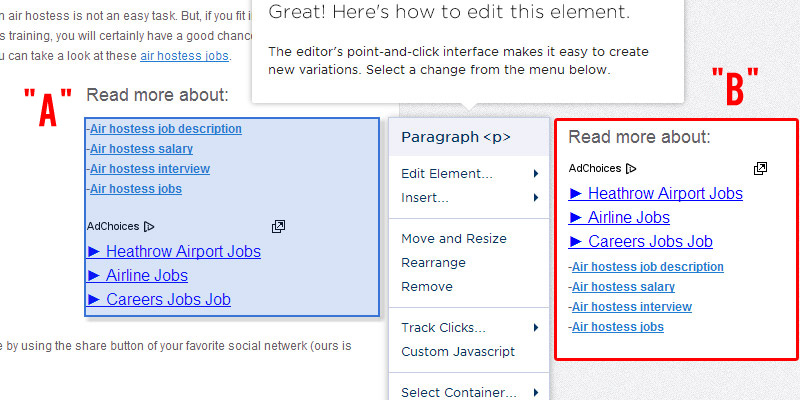
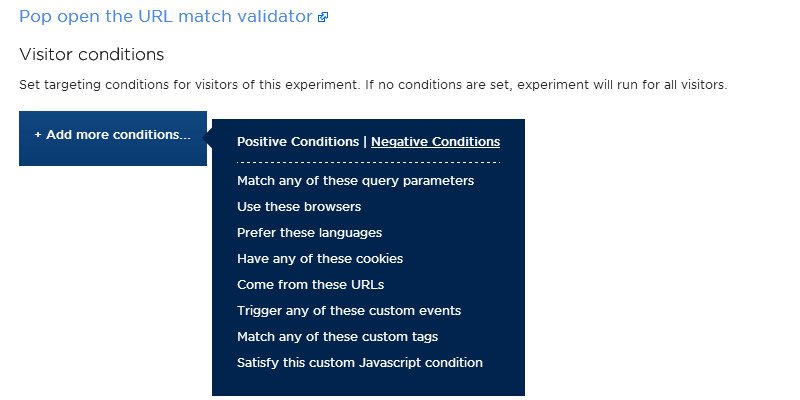
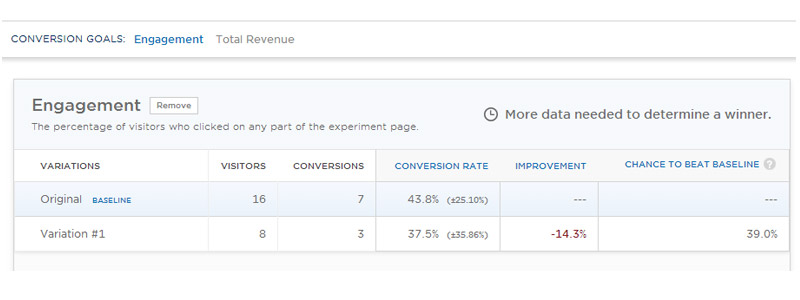
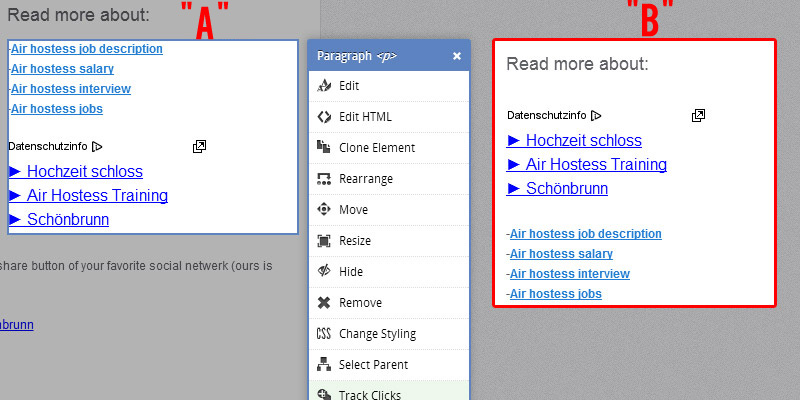

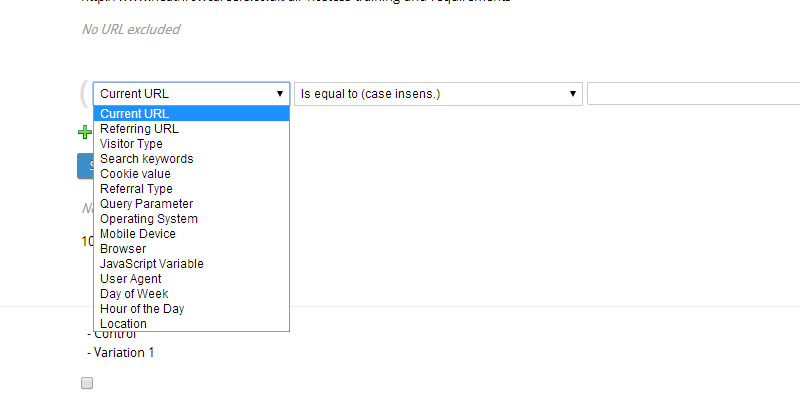


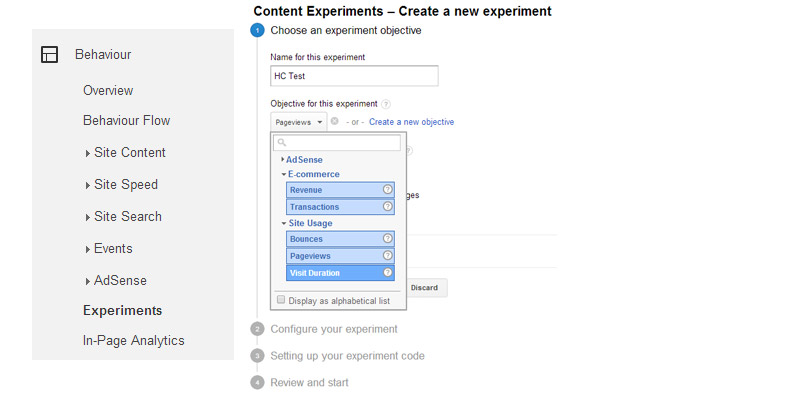

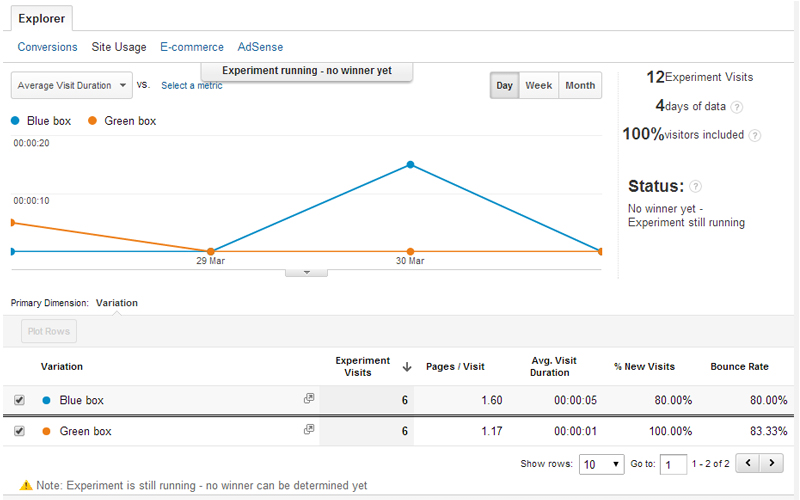
 "Experiment or die, there is no try."
"Experiment or die, there is no try." two different pages you want to test, it takes six and a half minutes for you to configure, test (QA) and launch a A/B test.
two different pages you want to test, it takes six and a half minutes for you to configure, test (QA) and launch a A/B test. 
 Pretty much all Testing tools are self contained, simple to launch (A/B
is brain dead easy, MultiVariate needs your brain to be awake – that's
not hard is it?), they contain all reporting built in and the data is
not that hard to understand.
Pretty much all Testing tools are self contained, simple to launch (A/B
is brain dead easy, MultiVariate needs your brain to be awake – that's
not hard is it?), they contain all reporting built in and the data is
not that hard to understand.




 You could ask your mom to pick a version she likes.
You could ask your mom to pick a version she likes.

 Before
we get to the ABC’s, it is imperative that you know with absolute
certainty that you can offer and deliver, better than anyone else, a
quality service solution that solves a current problem or a valuable
product that fills a current need.
Before
we get to the ABC’s, it is imperative that you know with absolute
certainty that you can offer and deliver, better than anyone else, a
quality service solution that solves a current problem or a valuable
product that fills a current need.